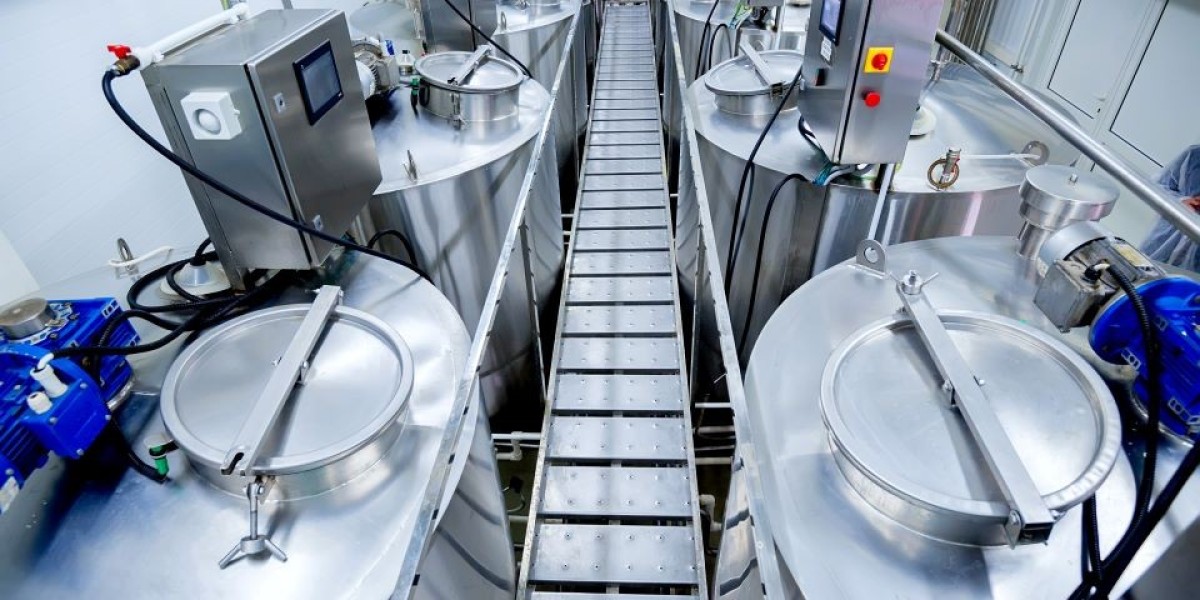The food and beverage industry is experiencing a wave of innovation, with advances in processing equipment at the heart of these changes. As consumer demands evolve and production becomes more complex, manufacturers are turning to cutting-edge technologies to stay competitive. These new trends in equipment are reshaping how food and beverages are processed, improving efficiency, safety, sustainability, and product quality.
1. Automation and Robotics
Automation has already made significant inroads into food and beverage processing, and its role is only set to expand. Automated systems and robotics are streamlining production, reducing the need for manual labor, and increasing operational efficiency. Tasks like sorting, packaging, and labeling are increasingly being handled by machines, which can operate at higher speeds and with greater precision than human workers.
Robotics is particularly valuable for repetitive tasks, as well as for processes that require high levels of accuracy, such as picking and placing products. In addition to boosting productivity, these automated systems reduce human error and help ensure consistency across production batches.
2. Internet of Things (IoT) and Smart Equipment
The Internet of Things (IoT) is playing an increasingly important role in the Food and Beverage Processing Equipment. IoT-enabled equipment allows for real-time monitoring and data collection, providing operators with valuable insights into production performance. Sensors embedded in processing machinery can track variables such as temperature, humidity, and equipment wear, alerting operators to potential issues before they lead to costly downtime.
This connectivity enables predictive maintenance, where equipment issues can be identified and addressed proactively, reducing unplanned stoppages. Additionally, IoT technology allows for more precise control of processes, leading to better product consistency and reduced waste.
3. Energy-Efficient Equipment
Sustainability is a growing focus in the food and beverage industry, and energy-efficient equipment is playing a critical role in reducing the environmental impact of production. Manufacturers are increasingly adopting equipment designed to minimize energy consumption while maintaining high levels of performance.
Innovations such as variable frequency drives (VFDs), heat recovery systems, and energy-efficient motors are helping companies lower their energy use. By reducing electricity consumption and optimizing energy-intensive processes like heating, cooling, and refrigeration, these technologies help producers cut costs and reduce their carbon footprint.
4. Hygienic Design and Food Safety
Food safety is paramount in processing, and advances in equipment design are helping manufacturers maintain higher levels of cleanliness and hygiene. Modern equipment is built with materials and surfaces that are easier to clean and sanitize, reducing the risk of contamination. Many machines also feature smooth, rounded edges and minimal seams, which prevent the buildup of bacteria and food particles.
Another growing trend is the use of automated cleaning systems, such as Cleaning-In-Place (CIP) technology. These systems allow machinery to be cleaned without disassembly, saving time and reducing the chances of human error during cleaning. With food safety regulations becoming more stringent, hygienic equipment design will continue to be a priority for manufacturers.
5. Sustainable Packaging Solutions
Packaging is an essential aspect of food and beverage processing, and sustainable solutions are becoming more prevalent. As consumers become more environmentally conscious, manufacturers are adopting packaging equipment that can handle eco-friendly materials, such as biodegradable or recyclable packaging.
Sustainable packaging equipment is designed to reduce waste by optimizing material usage and improving the efficiency of packaging processes. Machines that minimize packaging material while maintaining product protection are becoming a popular choice, as they help companies reduce their environmental impact and align with shifting consumer preferences.
Get More Insights on- Food and Beverage Processing Equipment
For Deeper Insights, Find the Report in the Language that You want:









